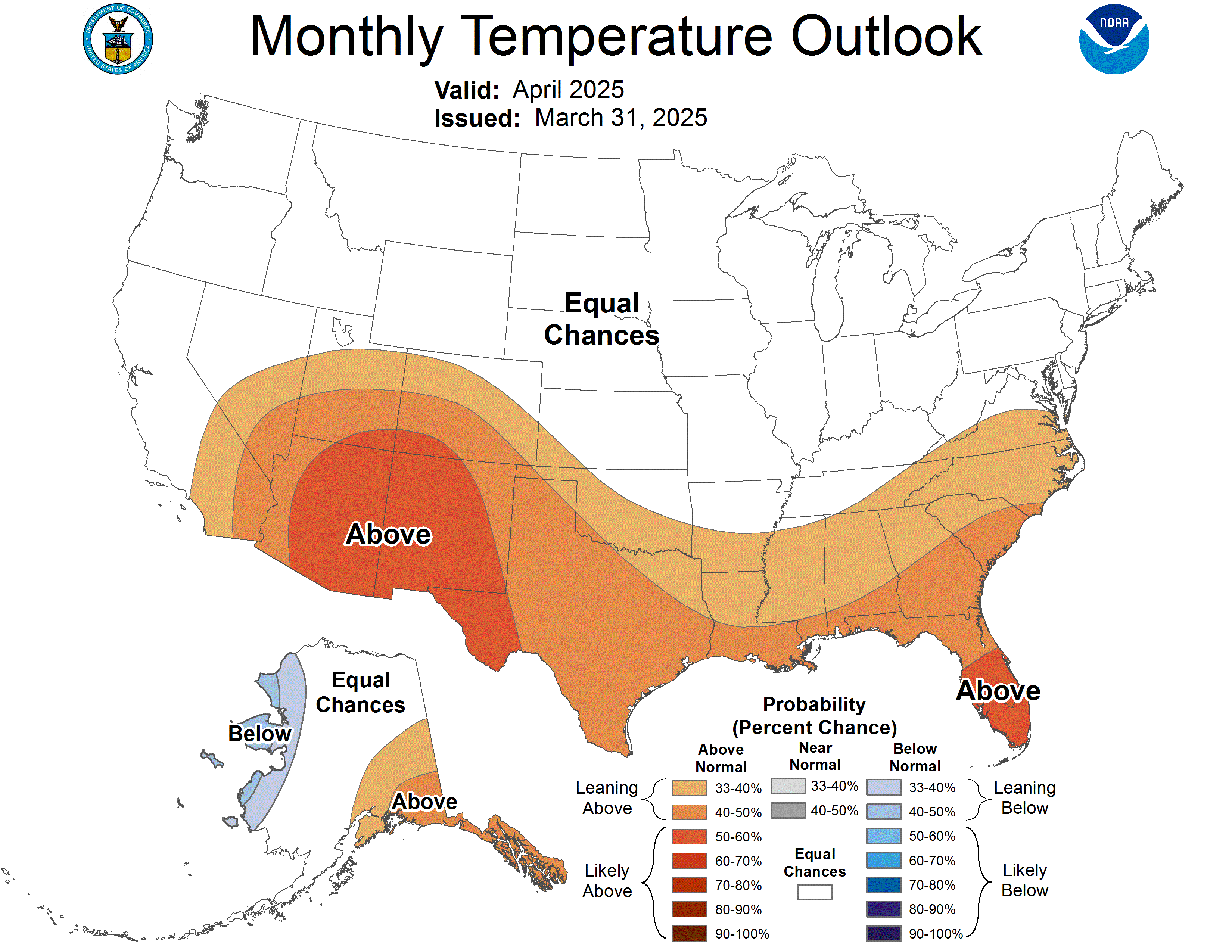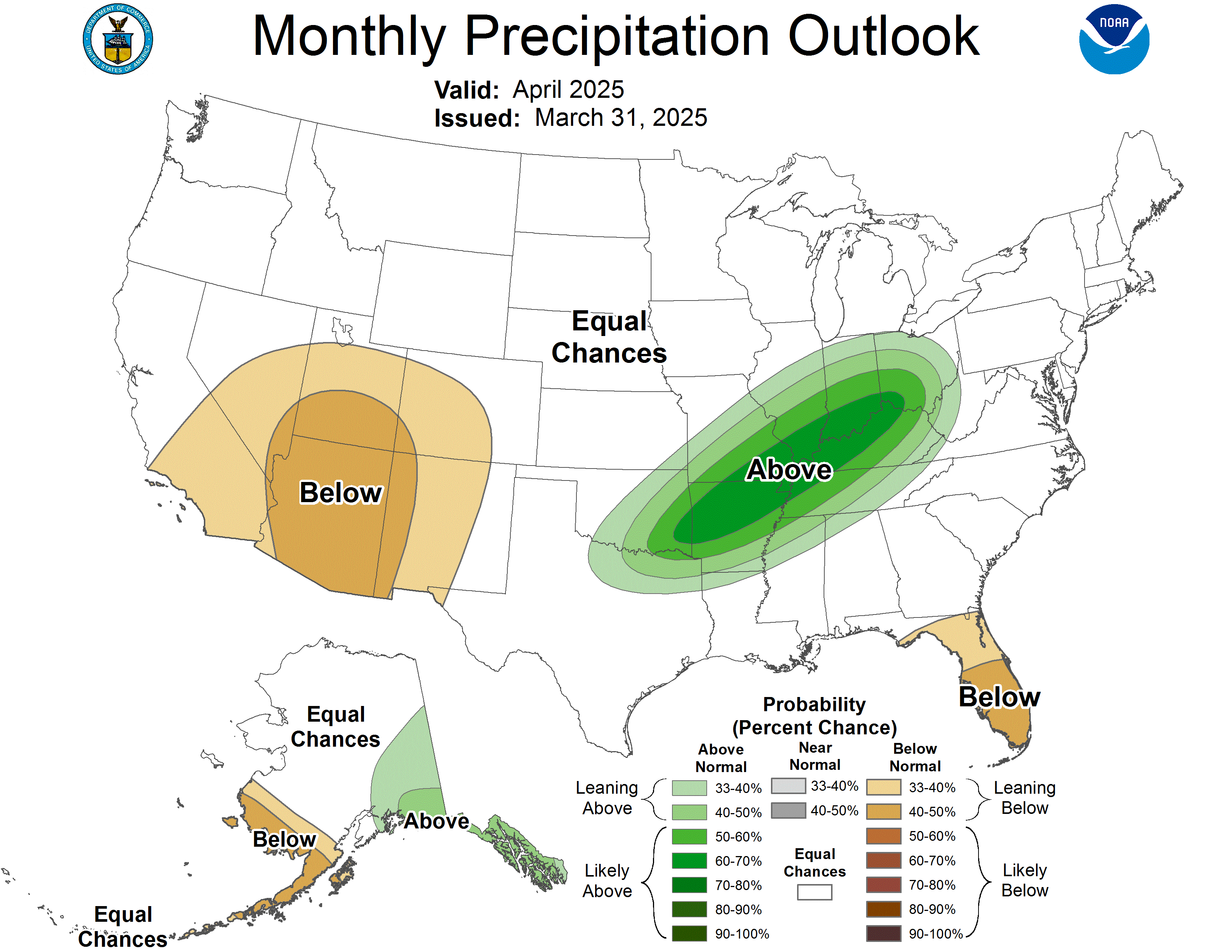June Newsletter Cover

" It was June, and the world smelled of roses. The sunshine was like powdered gold over the grassy hillside."
- Maud Hart Lovelace, Betsy-Tacy and Tib
Establishing New Plantings
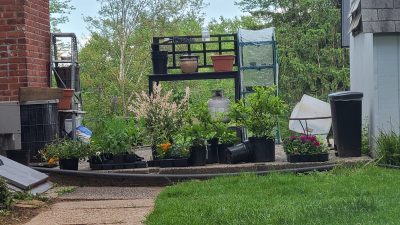
Many gardeners have done a majority of their seasonal work by the start of June. While spring is the best time to plant, you will see trees, shrubs and perennials going into the ground as projects pop up over the summer. It CAN be done but NEEDS to be done wisely! Here are some tips to keep any new plantings as healthy as possible in the warmer summer months.
- The sooner plants can be put into the ground, the better! Plan to purchase and plant within a short timeframe (over the same weekend, if possible). Plants in containers tend to dry out faster and will almost certainly need daily watering if left in hot temperatures and sunny locations.
- Pace yourself and break up your projects if you need to!
- Dig a hole the same depth as the pot. Digging wider than the root ball will help it spread but digging too deep can risk burying the crown of the plant which can lead to complications further down the road.
- If the soil and plants are not nutrient deficient, fertilizing is not necessary. We always recommend fertilizing based on a soil test analysis whenever possible.
- Do not divide plants in their first year of establishment.
- Water the soil line with the goal of providing enough water to move beyond the root ball. This will encourage roots to continue to stretch outward.
- Apply 2-3 gallons of water per inch of trunk diameter immediately after planting.
- Be advised: Watering with sprinklers or drip hoses will only water the first couple inches of soil unless run for long periods of time.
- Check for water regularly.
- Keep in mind that different plants have different needs and instructions on the tag may provide insight into watering.
- Plants that are stressed, exposed to extreme weather conditions, or producing flowers/fruit may need closer attention.
- The best way to know if a plant needs water is to check the soil. Feel the first few inches of the soil to determine if it is wet or dry
- Many potting media mixes used by nurseries may dry out faster than the soil surrounding the plant in the ground. Check as close to the center of the root ball as possible, being careful not to disturb the roots.
- Keep in mind that different plants have different needs and instructions on the tag may provide insight into watering.
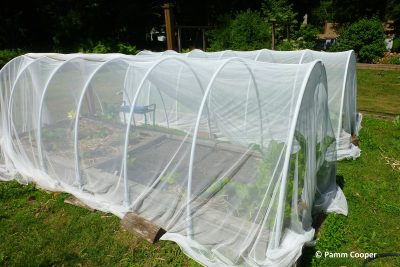
Continuing Veggie Garden Success
- Split garden chores up. If you weed for 30 minutes every night after dinner it can be much more enjoyable than having to spend hours of energy on it all in one go.
- Keep an eye on the weather - plants will need more water and even possibly more support on hot or windy days. When tomatoes start to show up - heavy rains may cause them to split so picking them early can help to prevent losses.
- Start scouting now! Look for signs of insects and eggs on the underside of leaves while plants are small and manageable.
- If you have had squash vine borer, cabbage moths, or other types of flying insects - consider using row covers. Keep in mind you may have to hand pollinate if you use this method.
- Giving young vegetable gardens supports early can allow the plants to grow into them as opposed to you making them fit when they're a bit too big. Gardeners have used different types of trellising over the years, and each found what works best for them. A few of them include:
- Tomato Cages
- Stakes
- The Basket Weave/The Florida Weave
- String or Twine Guides
- Compare Various Staking Techniques
Planting to Attract Hummingbirds

Gardeners all over North America strive to create a garden space enticing enough for hummingbirds, butterflies, and other pollinators to stop by on their travels.
- Even though we all associate the color red with these little creatures, they actually see many more colors than the human eye can even detect. You can select other colors to make your garden enjoyable for you and your winged friends.
- Flower shape matters! Hummingbirds like tubular or trumpet shaped flowers best.
- Create a hummingbird haven by making sure there is always something in bloom in your garden. Gardeners can achieve this with long blooming annuals, a series of perennials that bloom one after another, or a combination of both.
We've helped to create a brief list of plants that will improve your chances of attracting hummingbirds into your garden spaces!
Annuals
- Cuphea spp.
- Mexican Heather
- Bat Faced Heather
- Cigar Plant
- Firecracker Plant
- Lantana
- Salvia spp.
- Black & Blue
- Rockin' Series
- Torena
- Verbena
Perennials
- Delphinium
- Dianthus
- Garden Pinks
- Dicentra
- Bleeding Heart
- Hosta
- Monarda spp.
- Monarda fistulosa Bergamont
- Monarda didyma Jacob Cline
Native Plant Highlight: Mountain Laurel
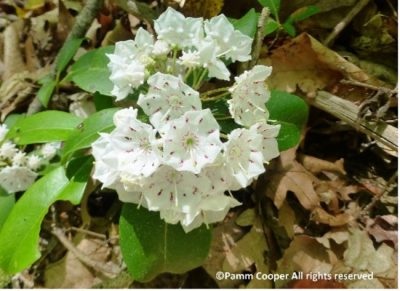
Kalmia latifolia is broadleaf evergreen native to eastern North America and is found in open woods, edges of water or along woodland edges.
Flowers are white and are n bloom from late May to early June. It can form thickets in the woods, and the older specimens have rather picturesque gnarling of trunks and branches. There are multiple cultivars of this plant, some with very colorful flowers.
Native Insect: Elderberry Borer
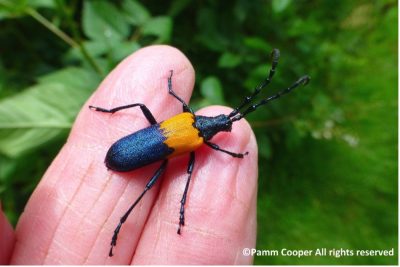
This native long-horned beetle is a spectacular, though uncommon. It can be found in natural areas where there are elderberry plants. It is large, has long serrated antennae, and has elytra that are orange and bright metallic blue. Larvae are borers of elderberry stems and roots but are not a serious pest in the wild where elderberry are numerous.
Wildlife Highlight: Turtles
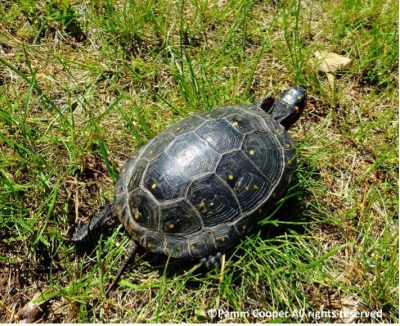
Our native turtles will be or are already looking for suitable places to lay their eggs. Sometimes they travel a distance from the water source they live in. As they travel, they are often a victim of motor vehicles as they cross roads at a less than rapid pace. If you decide to help a turtle cross the road, make sure to place it on the side of the road it was trying to get to, as females will only try to get to the side they were originally headed for. Pictured is a spotted turtle on its way somewhere.
CT Updates its Invasive Species List
The Connecticut Invasive Plant Working Group has helped in the efforts to bring more plants to the state invasives list. This year, legislation was passed that will affect the sale and transport of:
- Bradford/Callery pear (Pyrus calleryana)
- Quackgrass (Elymus repens)
- Japanese angelica tree (Aralia elata)
- Japanese wisteria (Wisteria floribunda)
- Chinese wisteria (Wisteria sinensis)
Additionally, Porcelainberry (Ampelopsis brevipedunculata) and Mugwort (Artemisia vulgaris), will be added to the state's prohibited from sale list as of October 2024.
Vegetable Gardening Resources
During the growing season, UConn Extension publishes a regular pest alert. Additionally, the New England Vegetable Management Guide offers a lot of information about specific vegetable crops.
While the target audience for these publications is usually commercial growers, home gardeners can learn a lot from these materials including identification and management of common pests in your veggie gardens!
If you ever need confirmation on an ID or have additional questions about what you read in these reports, please do not hesitate to reach out to us at the Home & Garden Education Center! We're happy to help your gardens thrive.
UConn Fruit Update
The UConn Fruit Program publishes a fruit update, very similar to the IPM Vegetable Pest Alert. If you keep fruit trees, this may be a valuable resource for you! If you ever need help understanding how to apply these principles to your own home garden, let us know!
Knowledge to Grow On
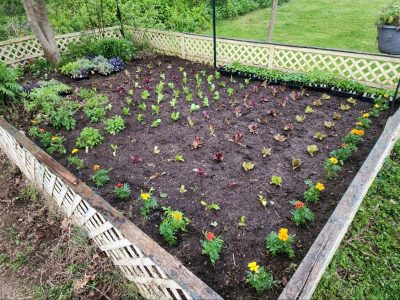
Read our Ladybug blogs written weekly:
Be Prepared for Ticks
Soil Prep for Success
Strawberry-licious!
How to Tie Climbing and Rambling Roses to Achieve the Best look
Upcoming Events and Things to Do
- Visit a farmers market - Find fresh produce, local goods, and all sorts of special treats all summer long.
- June is Strawberry Season - Check out this list of Strawberry Festivals around Connecticut or go pick your own this month.
- Celebrate Father's Day June 16th.
- Elizabeth Park is open daily for visitors and June is a great time to visit their historic Rose Garden. Join them June 16th for their Rose Sunday event to celebrate the 120th anniversary of their Rose Garden!
- Celebrate Pollinator Week- Check out these virtual events happening June 17th - June 21st. Or get out and plant some pollinator friendly plants with your friends!
- June 8th is Connecticut Open House Day- Over 200 local tourism attractions are open to the public with free or reduced admission.
- Connecticut Historic Gardens Day - June 23rd. Visit one of many of Connecticut's Historic Gardens for tours, garden talks, and other events.
- Attend a Juneteenth celebration! Juneteenth is observed on June 19th. Many towns and local organizations will host events and activities throughout the month to celebrate freedom, culture, and community. Keep an eye out for what's happening near you!
Educational Opportunities & Workshops
- CT Butterfly Association Spring Meeting June 8th, Madison, CT
- How to Identify & Control Weeds, June 13th, Stamford, CT
- Summer Tree ID for Beginners June 15th, Hampton, CT
- Knockout Natives with Sam Hoadley June 20th, Middletown, CT
- Forestry Walk & Talk, June 27th - Hampton, CT
May Gardening Tips
- Plant vegetable starts after all danger of frost is gone and the soil is warm. This is usually the last week in May.
- Direct seeding of beans, corn, cucurbits and melons can be done at this time as well.
- Peppers & tomatoes like warm weather!
- Put nets over ripening strawberries to protect them from birds and other wildlife.
- Lily leaf beetles often show up first in spring on leaves of the crown imperial (Fritillaria). Check both sides of the leaves and down inside the center whorl of leaves. Also check the undersides of leaves for tiny orange eggs. The larvae have orange, brown, or greenish yellow bodies that are sometimes hidden under their excrement. Hand-picking the adults and the egg masses is the easiest control method.
- Aphids and lace bugs will appear soon. Spray with water or use a low-toxicity insecticide to control them. Asian lady beetles are a beneficial insect that feed on aphids.
- Remove any tree wraps or guards you placed on young trunks for winter protection.
- Clematis vines like cool roots so apply mulch or plant a low-growing ground cover to shade the ground.
- Use fresh potting soil in your containers as old soil has fewer nutrients and may contain harmful bacteria and fungi.
- As night temperatures moderate into the 60's, move houseplants outdoors. Help them with the transition by putting them outside on warm days and bringing them in on when nights are too cold. Avoid putting them directly into full sun or windy locations.
- Hummingbirds and orioles return to northern states by mid-May. Clean and refill feeders to attract these colorful birds to your backyard or fill hanging baskets with flowers that will attract them such as petunias, salvia, and fuchsia.
- Aerate and moisten the compost pile to speed decomposition.
This Month’s Newsletter Contributors:
Pamm Cooper, Dr. Nick Goltz, Dawn Pettinelli, Marie Woodward, Heather Zidack
